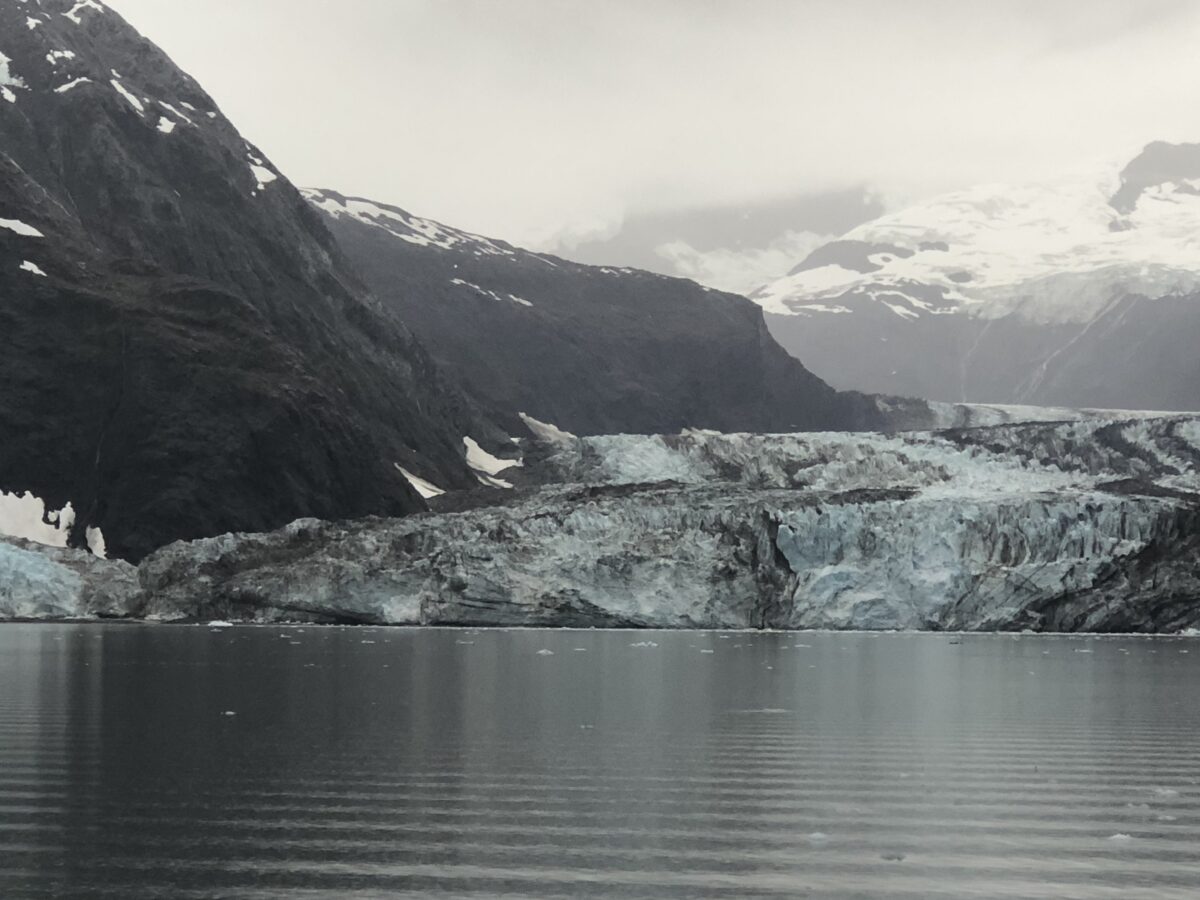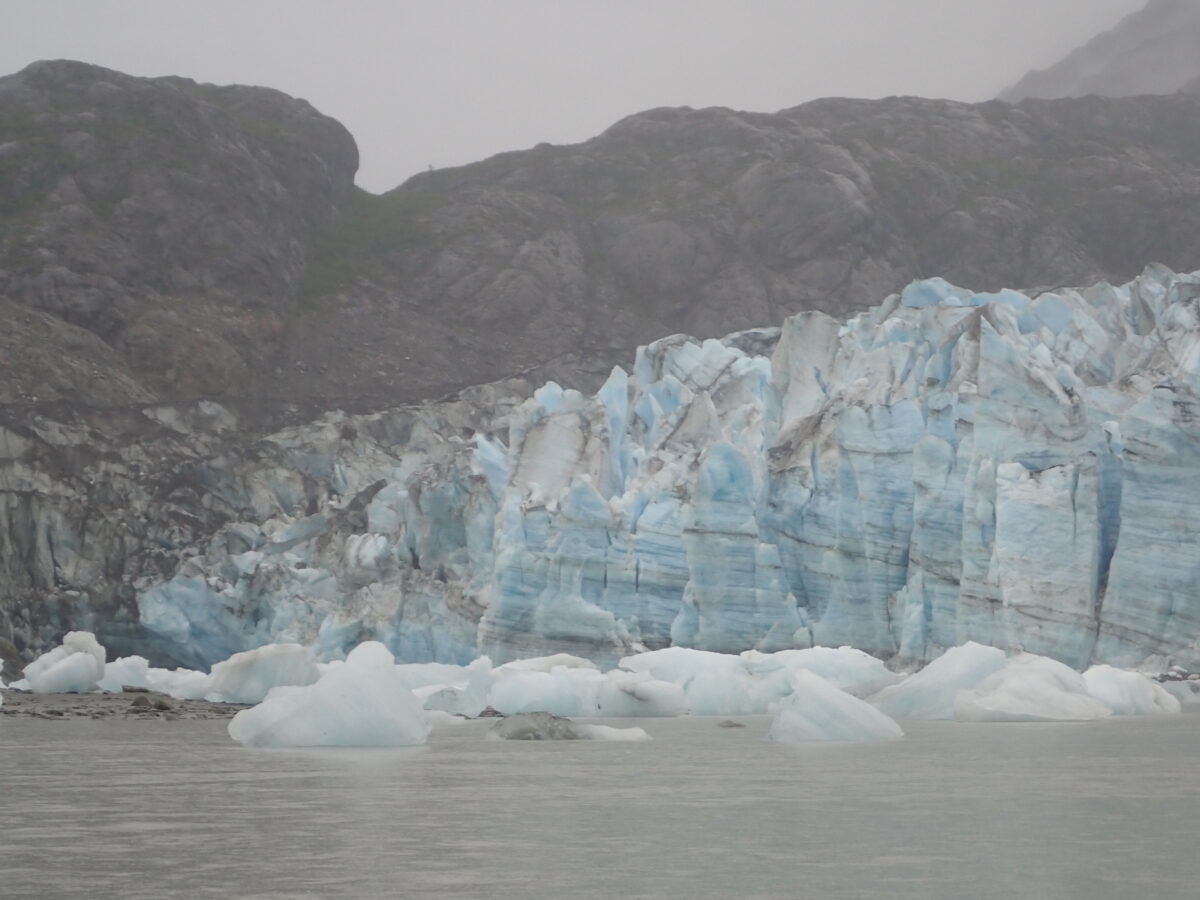Glacier Bay National Park and Preserve
When we think of our recent visit to Glacier Bay National Park and Preserve in Alaska, we remember waking up and having coffee on the deck of our ship, watching ice cubes float by; occasionally with a passenger or two – sea lions catching a ride on an ice flow.

As the ship motored towards the end of the inlet, we saw more and more ice in the water, and watched sea otters float by. Snow capped mountains rose to either side of us; some as high as 14,000 feet. There were waterfalls everywhere!

John Hopkin’s Glacier
Our first stop was at the end of John Hopkin’s Inlet – some 65 miles from the visitor center. John Hopkin’s Glacier is a tidewater glacier, meaning that it comes right down to the water. You don’t want to get too close to the glacier face. When glaciers calve, falling ice chunks can be the size of school busses! We didn’t see it, but we did hear a huge groan and the thunder of cracking ice.

Lamplugh Glacier

Our next stop was Lamplugh Glacier. This was not a tidewater glacier. It has receded, leaving a small strip of land between the bay and the glacier. Some of our group took a skiff and landed on the shore, then hiked up to see the glacier from above. We decided on the kayak option. That was pretty cool… kayaking with chunks of ice floating by.

Something we hadn’t thought about was how big these ice chunks are, with only a small part visible above the top of the water. We were warned not to get too close. They can roll over unexpectedly and the biggest part can easily land on you. We certainly didn’t want to risk capsizing into that frigid water!

The best thing about our excursion to the glacier was the hot chocolate and warm jacuzzi once we got back on to our ship!

Inland Passage
Like us, most visitors to Glacier Bay arrive via a cruise ship. Ours was a small ship, meaning we had the flexibility to go into some of the smaller inlets where we could kayak or go off exploring in a skiff.

At one place, we sat on board the skiff and watched mama bears as they taught their cubs how to fish.

On another day, we followed a pod of humpback whales and watched them team up to fish – a behavior called “bubble netting”. They would blow bubbles below a school of fish to confuse them, then the whales would all rise up at the same time, with their mouths wide open to scoop up the fish.

Getting to Glacier Bay National Park and Preserve
Glacier Bay is absolutely a water-based park. Unless you arrive by boat, you would fly into Gustavus and then take a shuttle to the national park. The visitor center is at Bartlett Cove, the only developed area in the park. There is a lodge there as well as a campground. The park service rents kayaks and maintains several hiking trails, the longest is 8 miles (in bear country!)

To visit the glaciers, you have to take a boat – a private vessel or cruise ship. If you are staying in Gustavus or in the national park, the National Park Service offers an all day ranger-led boat tour. An interesting option, if you are adventurous, is for the national park ship to drop you and your kayak off at one of the designated camps in the park. Now, that’s back country!
About Glacier Bay National Park and Preserve
No matter how you arrive, Glacier Bay is well worth a visit. Set aside as a National Monument in 1925, it was re-designated in 1980 as part of the Alaska National Interest Lands Conservation Act. The park is 3.3 million acres of glaciers, rainforest, mountains and fjords. It is part of a 25 million acre world heritage site that spans into Canada; one of the world’s largest international proceeded areas.
For us, this is an extra-special place. It was the last of the eight National Parks in Alaska. Now we have visited them all!
Need Help Planning Your Visits?
If you would like to explore this or other National Park Units, but need a bit help in the planning, please give us a call at (480) 609-3978. We are happy to offer customized trip planning.
#FindYourPark
#SeeAmericaFirst

